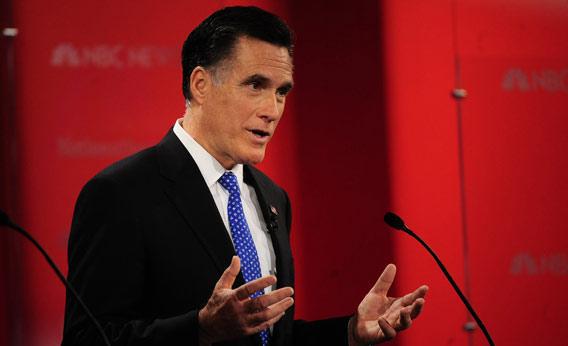Asked for the first thing he would do as president if informed of Fidel Castro’s death, Mitt Romney said that he would “thank heavens that Fidel Castro has returned to his maker and will be sent to another land.” What are Mormon heaven and hell like?
There are three heavens and one hell. The three heavens are ranked from most holy to least by their “degrees of glory.” The celestial kingdom is the most desirable, and serves as the destination for all those who accept Jesus, are baptized within the Church of Jesus Christ of Latter-day Saints (whether before or after death), and remain faithful throughout their lives. People who die before the age of 8, when Mormons are baptized, also go to the celestial kingdom. The next most desirable heaven is called the terrestrial kingdom, which holds all those who don’t fully accept Jesus on Earth, but who are basically good people and accept him after death. The telestial kingdom is for those who never truly accept Jesus, and includes murderers, as well as “liars, and sorcerers, and adulterers, and whoremongers, and whosoever loves and makes a lie.” These unbelievers must first suffer for their sins, but eventually end up in a blissful place “surpassing the great understanding of men.”
If you don’t get into the one of the three heavens, you’re consigned in death to a place called “outer darkness.” This is reserved only for those who have God revealed to them and then deny Him anyway. While the residents of the telestial kingdom are thought to be “as innumerable as the stars in the firmament of heaven, or as the sand upon the seashore,” few are bound for outer darkness. These include Cain, Satan, and anyone who joined up with the devil before the creation of the Earth. LDS founder Joseph Smith is supposed to have compared this unpardonable sin to “say[ing] that the sun does not shine while he sees it.”
There are also different sub-degrees of glory within the celestial kingdom, and the highest degree can be reached only by couples who are married together in the temple, and in which the husband has joined what Mormons call the “Melchizedek priesthood.” (Pretty much every devout male Mormon joins the priesthood by the time he’s married.) Those who attain the highest degree become gods in the afterlife, meaning that they can bear new children in heaven, and may even have their own planets.
Depictions of the afterlife by LDS members are similar to those by many other Christians. Paintings and drawings often contain figures dressed in white and angels in the clouds, and indeed in Mormon doctrine dwellers of the three kingdoms of heaven are resurrected with physical bodies. While in both Mormon scripture and popular culture hell is often depicted as being a place where “the fire is not quenched,” along with plenty of “weeping, and wailing, and gnashing of teeth,” Mormons believe this may be figurative. Mormon scripture declares that when it comes to outer darkness, no man on Earth can understand “the end, the width, the height, the depth, and the misery thereof.” Indeed, outer darkness may not be dark at all—the name refers not to inferior lighting, but to an absence of any godly presence.
Mormon doctrine does not say whether Fidel Castro would “meet his maker,” or (as Newt Gingrich suggested) “go to the other place.” A dead Castro, too, would have the opportunity to accept Jesus Christ as his savior and repent of his sins, and he may receive a surrogate baptism by LDS members after his death.
Got a question about today’s news? Ask the Explainer.
